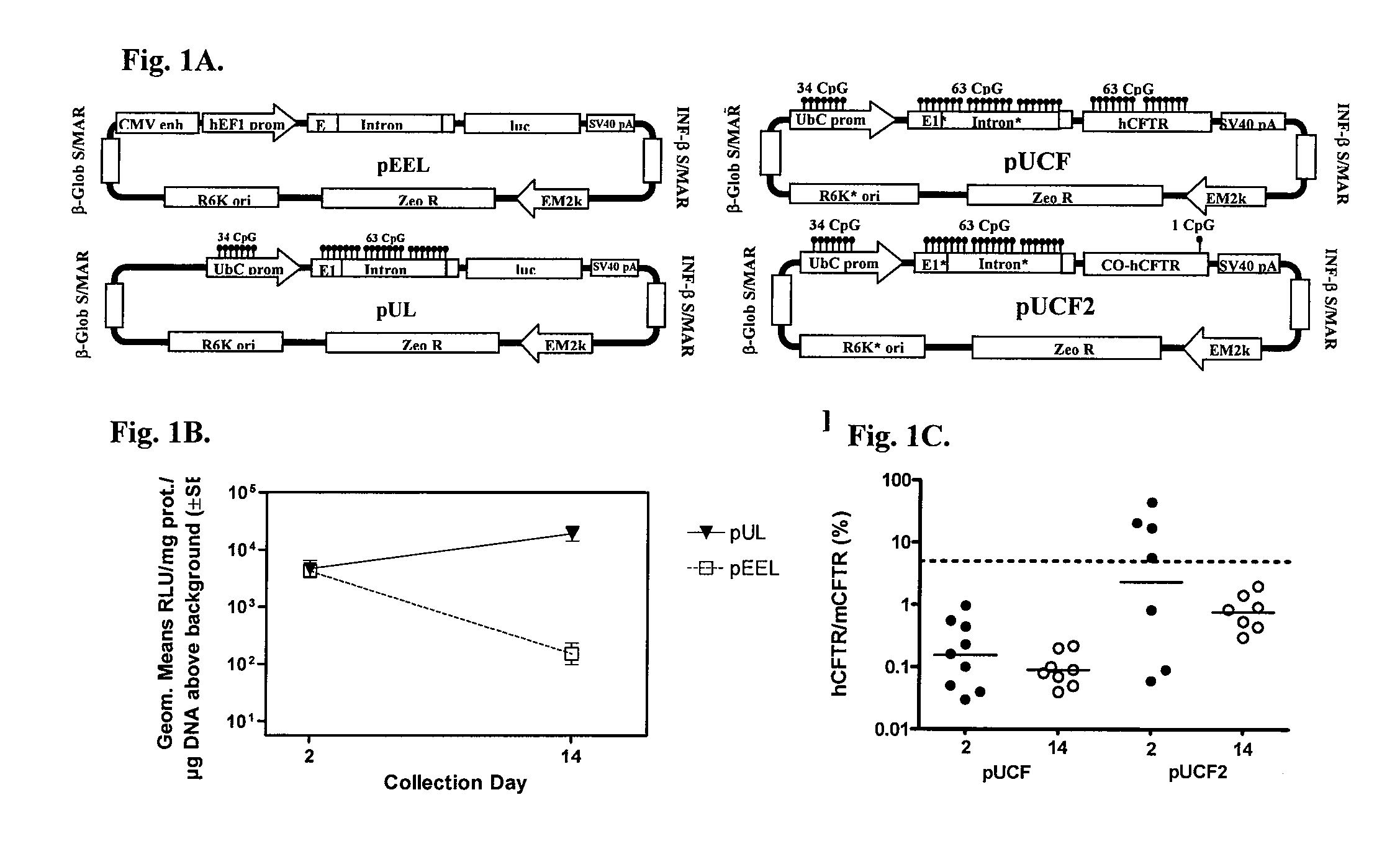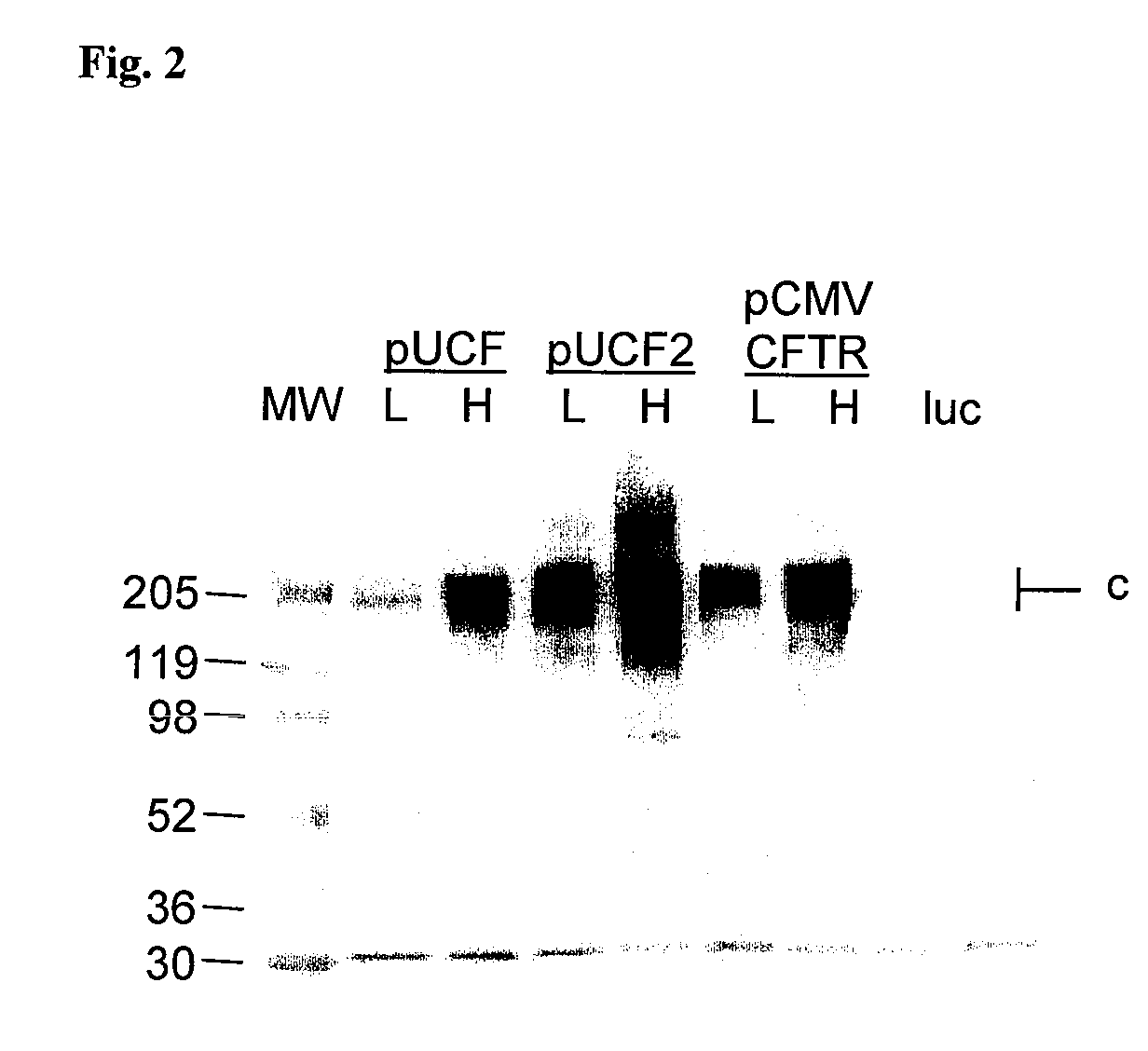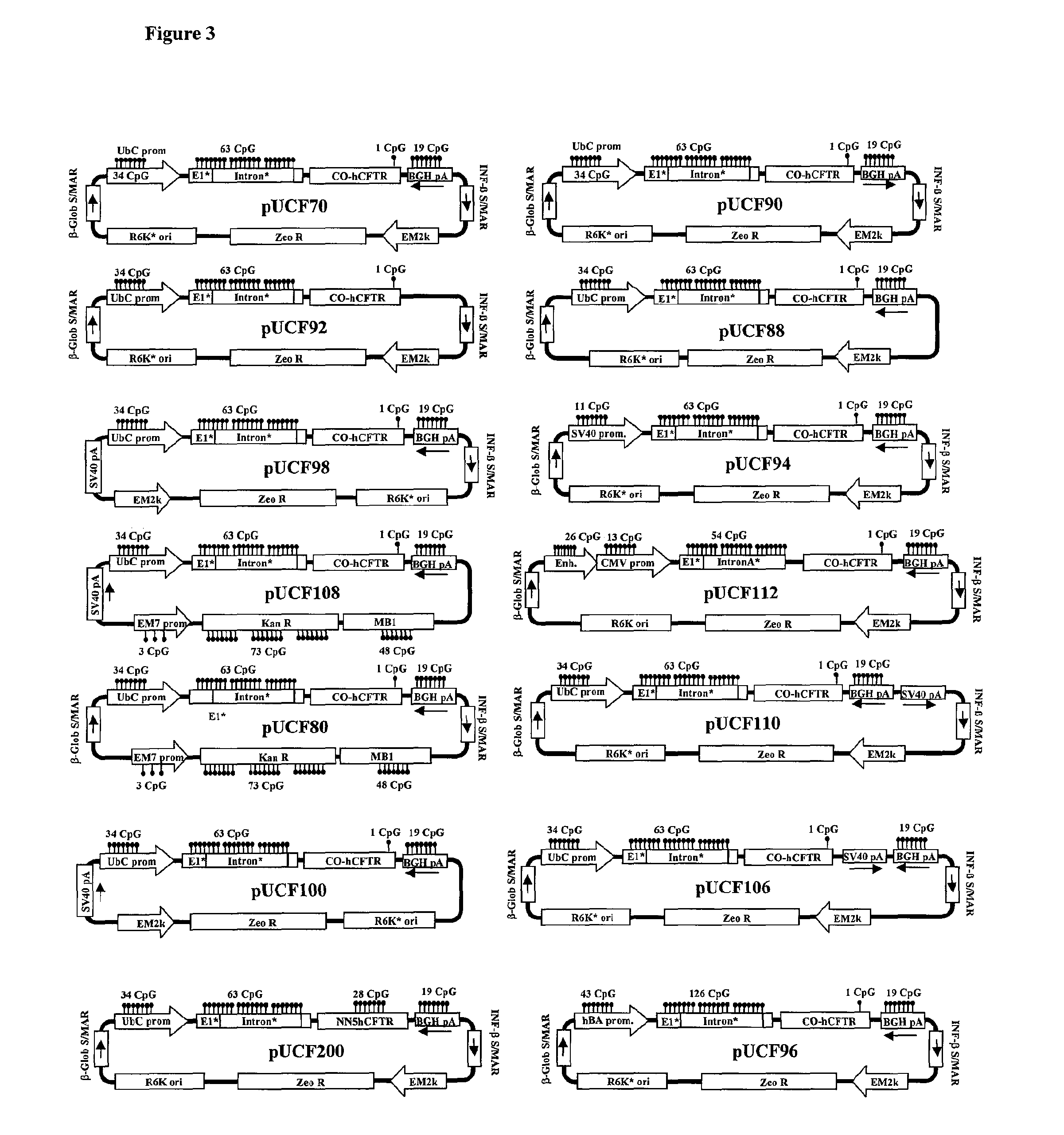Long-term in vivo transgene expression
a transgene and long-term technology, applied in the field of transgene expression, can solve problems such as reducing gene transfer efficiency, and achieve the effect of high transgene expression levels
- Summary
- Abstract
- Description
- Claims
- Application Information
AI Technical Summary
Benefits of technology
Problems solved by technology
Method used
Image
Examples
example 1
Initial Vector Design and hCFTR Gene Optimization
[0036]Plasmid backbone elements and expression control domains are important to optimize to produce high level and maintained transgene expression [14]. Multiple labs have reported improved expression longevity using CpG-reduced or CpG-depleted vectors [15, 16]. We prepared a completely CpG-depleted vector, pEEL, which contains a luciferase expression cassette driven by the human elongation factor 1 alpha (EF1α) promoter and terminates with an SV40 polyadenylation signal. The eukaryotic expression cassette is flanked with interferon-β and β-globin scaffold / matrix attachment domains (S / MARs) that potentially may prevent encroachment of heterochromatin formation into the eukaryotic cassette [17]. The plasmid backbone incorporates a zeocin resistance gene (ZeoR) expression cassette (FIG. 1A). Balb / c mice were dosed intranasally (IN) with compacted pEEL plasmid and lungs were harvested at days 2 and 14 to measure luciferase activity (FIG....
example 2
hCFTR mRNA Expression in the Mouse Lung: Initial Steps
[0040]pUCF or pUCF2 was dosed IN into Balb / C mice and lungs were harvested at days 2 and 14 for evaluation of CFTR mRNA. qRT-PCR was performed as described in Example 7. hCFTR (or CO-CFTR) mRNA expression is presented as a hCFTR / mCFTR expression ratio multiplied by 100%.
[0041]As shown in FIG. 1C, pUCF2 generated a CO-CFTR / mCFTR geometric mean ratio of 2.34% on day 2 which fell to 0.77% on day 14. The geometric mean of day 2 signal for pUCF2 was still below a biologically significant level of CFTR expression (5-10%), but four of seven animals showed higher expression than 5%. Although CFTR mRNA expression was not maintained, the hCFTR / mCFTR ratios for pUCF2 were significantly higher than pUCF (geometric mean ratio of 0.16% on day 2 and 0.09% on day 14). Interestingly, the day 2 expression for pUCF2 was considerably higher (14.6-fold) than for pUCF, which appears related to CO-CFTR since both plasmids are otherwise nearly identical...
example 3
Expression Cassette Optimization
[0043]Numerous attempts including complete CpG depletion of CO-CFTR, utilization of different natural hCFTR and synthetic introns, use of minicircles or DNA linear fragments, and other strategies failed to maintain CO-CFTR transgene mRNA expression (data not shown). Surprisingly, one pUCF2 derivative, pUCF70 (FIG. 3), containing a 3′ portion of transcribed sequences of the bovine growth hormone (BGH) gene (in an inverted orientation) in the 3′ UTR of CO-CFTR produced prolonged CO-CFTR expression. Elevated levels of hCFTR mRNA expression were observed at day 2 for pUCF70, comparable to prior results seen with pUCF2. Importantly, a CO-CFTR / mCFTR mRNA geometric mean ratio of 236% was observed at day 14, exceeding the expected therapeutic level of 5-10% (FIG. 4A). This study was repeated several times. In one study (designated as pUCF70′ in FIG. 4A), the same dose and same lot of compacted pUCF70 (106 μg) was dosed intratracheally (IT) in three groups of ...
PUM
| Property | Measurement | Unit |
|---|---|---|
| Length | aaaaa | aaaaa |
| Level | aaaaa | aaaaa |
Abstract
Description
Claims
Application Information
 Login to View More
Login to View More - R&D
- Intellectual Property
- Life Sciences
- Materials
- Tech Scout
- Unparalleled Data Quality
- Higher Quality Content
- 60% Fewer Hallucinations
Browse by: Latest US Patents, China's latest patents, Technical Efficacy Thesaurus, Application Domain, Technology Topic, Popular Technical Reports.
© 2025 PatSnap. All rights reserved.Legal|Privacy policy|Modern Slavery Act Transparency Statement|Sitemap|About US| Contact US: help@patsnap.com



